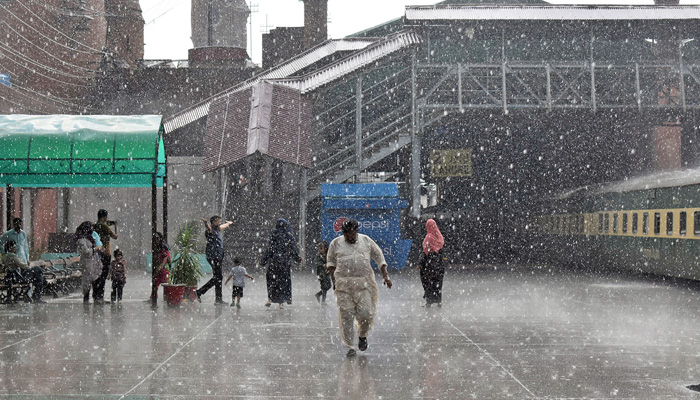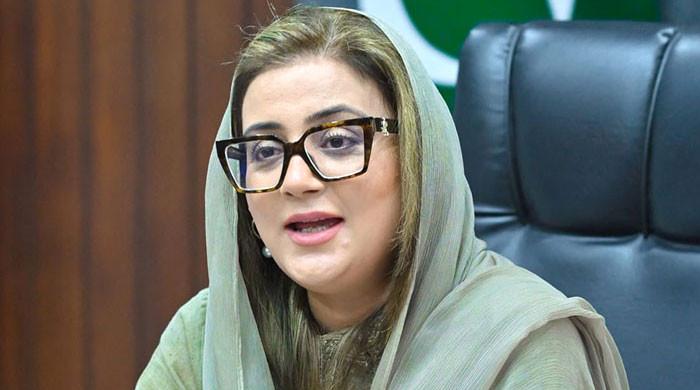July 2023 ranks 9th wettest in 63 years
Throughout July, Pakistan encountered four to five instances of widespread heavy to very heavy rainfall
August 08, 2023

- Most intense rainfall in July 2023 fell on 23rd.
- Last month, rain contributed 21.3% to national annual total.
- Previous records show July 2022 with highest national rainfall.
LAHORE: The Pakistan Meteorological Department has declared July 2023 as the ninth wettest month in the last 63 years, as the country witnessed rainfall that was notably above average, exceeding 70%, The News reported.
According to Met Office data, the previous record for the highest national rainfall in July was 177.80mm, recorded in 2022.
The PMD data further highlighted that the most intense rainfall of the month fell on July 23, with Lahore being drenched in 206mm of rainfall. Interestingly, the city became the wettest location following the heavy downpour, with a total monthly rainfall of 668.7mm.
Climatologically, the rain last month contributed 21.3% to the national annual total and 44.9% to the monsoon. Throughout July 2023, the country encountered four to five instances of widespread heavy to very heavy rainfall. Meanwhile, similar weather patterns were observed on a regional scale as well.
Gilgit Baltistan, recording largely above average (44.30mm/+233%), saw the wettest-ever July during the past 63 years (the record was 44.20mm in 1993), while Balochistan recorded 62.70mm/+111% (record was 163.30mm in 2022) and Sindh recorded 146.0mm/+143% (record is 245.40mm in 2022) rain, while the month ranked the 7th and 9th wettest July during the past 63 years, respectively. Punjab saw 152.80mm/+47%, AJK with 27.70mm/+31% and KP with 127.30mm/+19% also observed above-normal rainfall.
The other significant rains were recorded at Balakot 477mm, Islamabad Zero Point 453.9mm, Kasur 442.0mm, Kakul 427mm, Sialkot Cantt 422.4mm, Murree 415.5mm, Rawalpindi 408mm, Rawalakot 400.9mm, Muzaffarabad Airport 392.1mm, Gujranwala Cantt 386.5mm, Muzaffarabad City 379mm, Chakwal 365.9mm, Jhelum 346.4mm, Padidan 327.6mm, Malam Jabba 319mm and Mandi Bahauddin 296mm.
Nokkundi was the only station, which remained absolutely dry with no rain during the month. The national mean monthly temperature of July 2023 for Pakistan was 30.70°C, being -0.52°C cooler than the average of 31.22°C. The daytime (maximum) temperature at the country level was 36.25°C, -1.01°C cooler than the country average of 37.26°C.
Data also revealed that the nighttime (minimum) temperature at the country level was 25.08°C, being -0.06°C cooler than the country’s average of 25.13°C.
The hottest day of the month was recorded in Balochistan's Dalbandin on July 2 and in the province's other town, Nokkundi, from July 1 to 3, when it reached 47.5°C. It was also the warmest place during that month with a mean monthly maximum temperature of 43.6°C.
Similarly, the coldest temperature (6.5°C) of the month was recorded in GB's Bagrote on July 8, 2023; whereas Kalam in Khyber Pakhtunkhwa (KP) was the coldest place with 11.4°C in mean monthly minimum temperature.
The situation was almost similar on the regional scale too as GB at 24.06 °C (-1.96 °C), KP at 28.14 °C (-0.86 °C), Punjab at 31.75 °C (-0.77 °C), AJK 25°C (-0.42 °C), and Balochistan with 31.57 °C (-0.31 °C) all recorded cooler than average temperatures. Sindh with 32.56 °C (0.05 °C) was the only region that exhibited slightly warmer than average temperature.
In July this year, mean maximum (daytime) temperature of 36.25 °C recorded at the country level was also -1.01 °C cooler than the average of 37.26 °C. Similarly, the country-level night (minimum) temperature of 25.08 °C was -0.06 °C (slightly) cooler than the average of 25.13 °C (Table-5).
The mean temperature anomalies ranged from -5.1 to +1.8 °C while the mean maximum temperature anomalies were from -4.1 to +1.8 °C in the country, being considerably higher in lower Sindh.
Meanwhile, the city witnessed humid weather with scattered rain on Monday. Met officials said moist currents from the Arabian Sea were penetrating in upper parts of the country while a westerly wave was also present over the upper parts.











